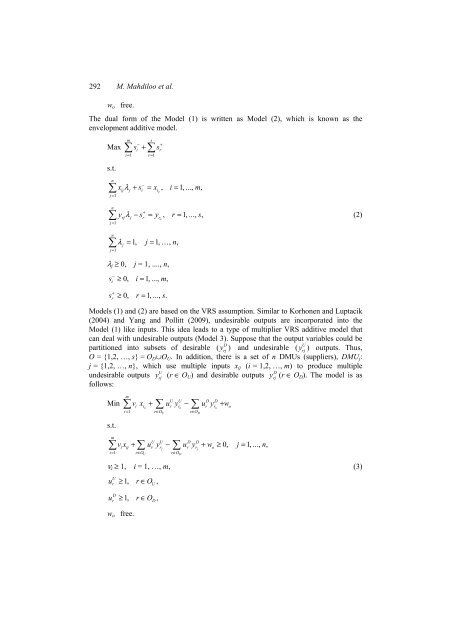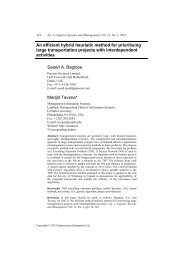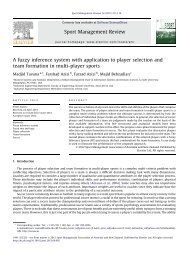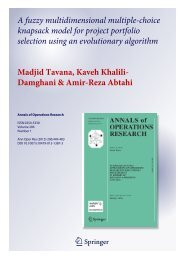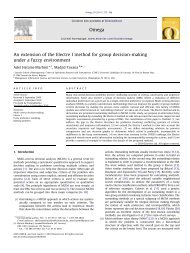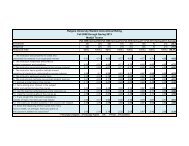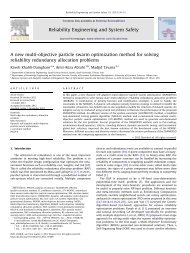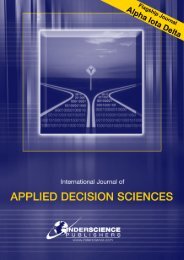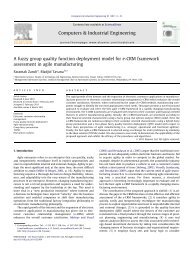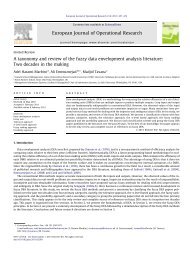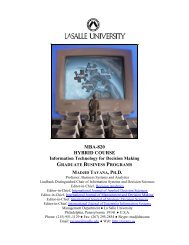A novel Data Envelopment Analysis model for ... - IngentaConnect
A novel Data Envelopment Analysis model for ... - IngentaConnect
A novel Data Envelopment Analysis model for ... - IngentaConnect
- No tags were found...
You also want an ePaper? Increase the reach of your titles
YUMPU automatically turns print PDFs into web optimized ePapers that Google loves.
292 M. Mahdiloo et al.w o free.The dual <strong>for</strong>m of the Model (1) is written as Model (2), which is known as theenvelopment additive <strong>model</strong>.Maxm s∑s− i+ ∑ s+ri= 1 r=1s.t.n∑j = 1nj = 1−x λ + s = x , i = 1, ..., m,ij j i io+∑ yrjλj− sr = yr, r = 1,..., s,(2)on∑ λj= 1, j = 1, …, n,j = 1λ j ≥ 0, j = 1, ...., n,s − ≥ 0, i = 1, ..., m,is + ≥ 0, r = 1, ..., s.rModels (1) and (2) are based on the VRS assumption. Similar to Korhonen and Luptacik(2004) and Yang and Pollitt (2009), undesirable outputs are incorporated into theModel (1) like inputs. This idea leads to a type of multiplier VRS additive <strong>model</strong> thatcan deal with undesirable outputs (Model 3). Suppose that the output variables could beDUpartitioned into subsets of desirable ( yrj) and undesirable ( yrj) outputs. Thus,O = {1,2, …, s} = O D ∪O U . In addition, there is a set of n DMUs (suppliers), DMU j :j = {1,2, …, n}, which use multiple inputs x ij (i = 1,2, …, m) to produce multipleundesirable outputs y U rj(r ∈ O U ) and desirable outputs yD rj(r ∈ O D ). The <strong>model</strong> is asfollows:MinmU U D D∑vi xi +o∑ ur yr −o∑ ur yr + wo oi= 1r∈OUr∈ODs.t.mU U D D∑ i ij ∑ r rj∑ r rjoi= 1 r∈OUr∈ODvx + u y − u y + w ≥ 0, j=1, ..., n,ν i ≥ 1, i = 1, …, m, (3)Uu ≥1, r∈O ,rUDu ≥1, r∈O ,rw o free.D


